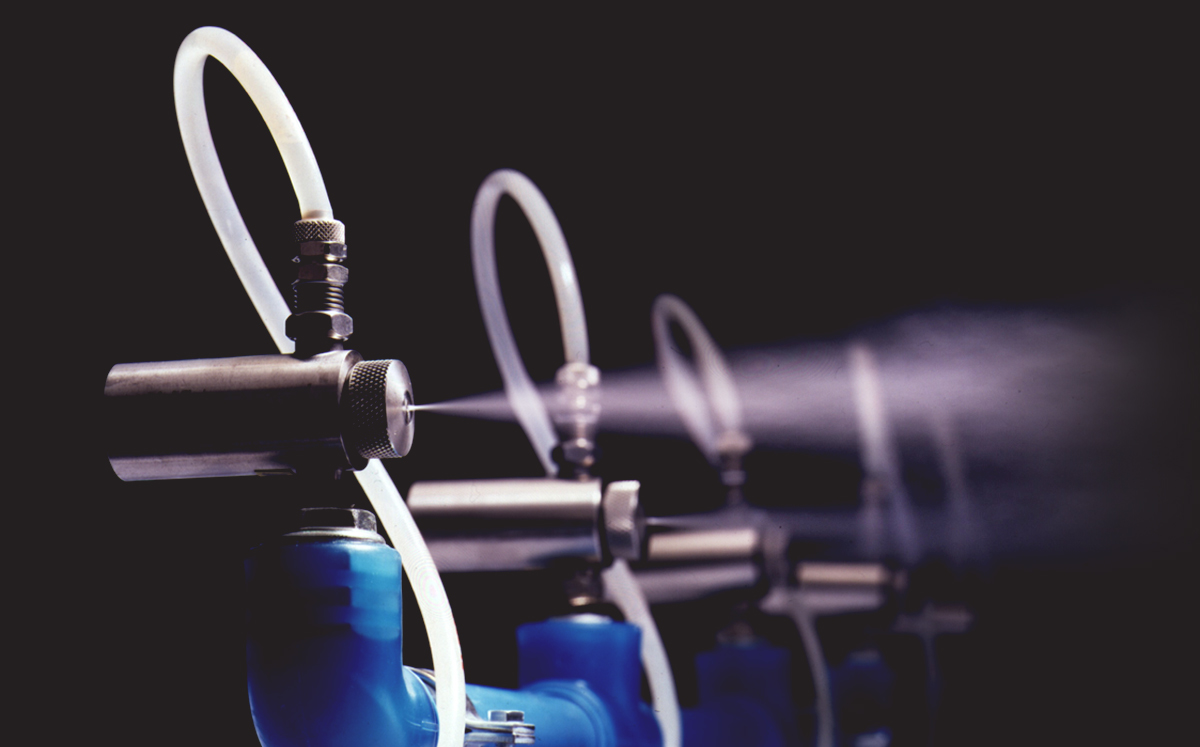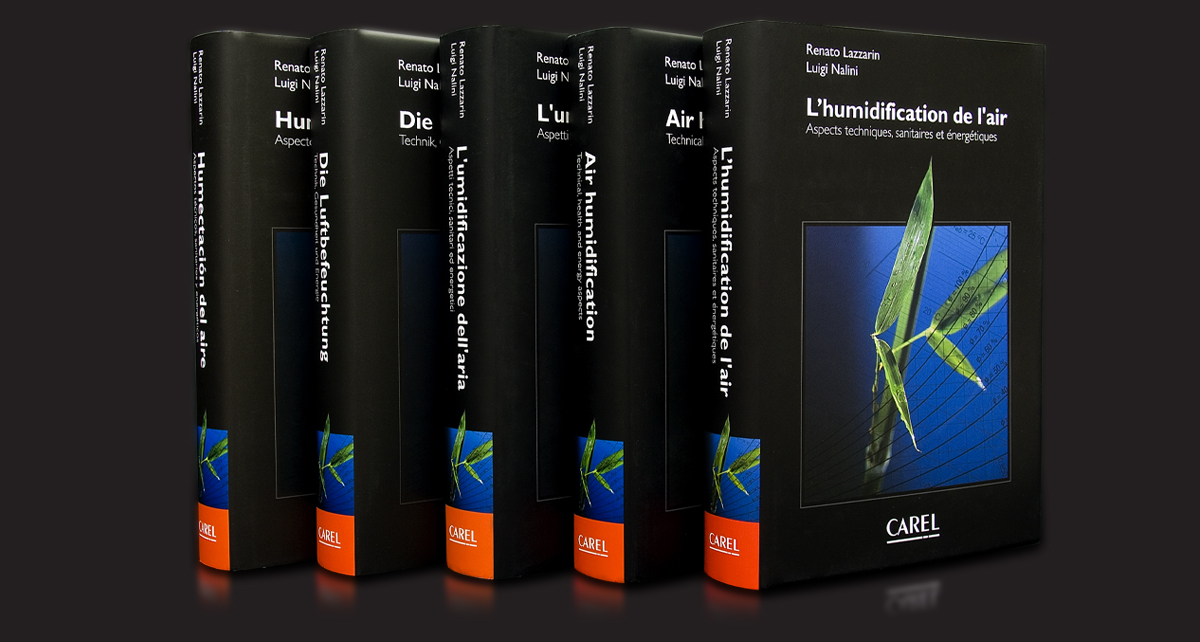Intervista Luigi Nalini
CHAPTER 2
1978: the first humidifier
As told by our Vice President, Ing. Luigi Nalini
"Initially, it was an uphill struggle [...] after a few attempts,
we completed our first humidifier: HUMITRONIC.
This was back in 1978."
What prompted CAREL to enter the humidification market?
In the 1970s, CAREL’s business was supplying electrical panels to Hiross, a European leader in air handling units for data processing centres, an application for which very stable temperature and relative humidity were required. The humidifiers installed on these modular units manufactured by Hiross comprised a tank with a float switch and immersed electric heaters, and had significant problems in terms of maintenance and reliability.
CAREL at the time was focused on the production of a low-tech product, i.e. the assembly of electrical panels, and wanted to diversify. This weakness we had identified on the Hiross units offered a perfect opportunity. Looking for inspiration, we came across a more technologically-advanced humidifier, marketed by a Swiss company, which used immersed electrodes inside a disposable plastic cylinder. A system that is widely used today, but was very innovative back then. It took us a few months to design our first humidifier and get it to market: we were totally inexperienced in electronics, so we hired an external consultant for the design and production of a basic analogue controller, we designed and built the water circuits in-house and started production using cylinders that were already available on the market.
Initially, it was an uphill struggle and we encountered several problems, above all in terms of reliability (in fact, the scale that built up due to the boiling water sometimes caused sparks, melting the cylinders). However, after a few attempts, we completed our first humidifier, initially exclusively for the Hiross group, which called it HUMITRONIC.
This was back in 1978.
When and how did CAREL start offering its own brand of humidifiers?
Observing what other manufacturers were doing, we decided to market humidification appliances for applications that weren’t related to data centres and where CAREL was not bound by contract with Hiross.
In the meantime, CAREL had hired technical personnel capable of designing these units independently. The result was the ESH HUMICONTROL range of humidifiers, equipped with their own metal casing. These humidifiers were suitable for stand-alone installation, for both comfort applications and industrial environments, with steam distribution directly into the room or the air handling units.
These humidifiers were very well received by the market. In the 1980s, unlike today, there was a limited number of steam humidifier manufacturers and therefore – by direct promotion and through trade shows – CAREL managed to gain a substantial share of the market, both in Italy and abroad.
Subsequently, during the 1990s, we designed our SD humidifier range. These were better engineered and equipped with a more advanced and reliable microprocessor electronic controller than the previous model. Before the huge success we had with programmable electronic controllers (at the end of the 1980s), humidification products accounted for up to 35-40% of CAREL’s sales.
"We started travelling around the world to see what was being done in other regions, so as to be able to offer the market innovative solutions."

What were the first export markets for your humidification products?
We first started exporting our products following trade shows, where we had made contacts with foreign distributors who were interested in marketing our SD humidifiers. The first markets were France, thanks to our contacts with Pierre Garcia; Germany, with Dieter Barbey; Great Britain, with the support of Lou Watts; later, with the help of Scott Herr, the United States.
And in the United States we started marketing compressed air spray adiabatic humidifiers, which got us into the large air handling unit market.
When was the range of humidifiers expanded?
To meet market demand in the different applications, we needed to broaden our range of humidifiers beyond the immersed electrode appliances and fill the gaps with respect to our competitors. When I joined CAREL full-time in 1998, my first task was to expand and modernise our range of humidifiers.
We started travelling around the world to see what was being done in other regions, so as to be able to offer the market innovative solutions. With a team of five designers we developed the humiSteam immersed electrode humidifiers, as well as the new OEM kits, and then the first heaterSteam, humiFog, gaSteam and CompactSteam units.


Download Air humidification for free
In 2004 you wrote a book about humidification. Where did this idea come from?
From the awareness that in general there is little knowledge of the physical phenomena related to air humidity and its effects on the human body and on materials: humidity cannot be seen or perceived immediately.
The aim of the book is to explain to thermodynamic designers the importance of maintaining correct relative humidity, the related phenomena, and the most cost-effective ways to control it in each specific situation. Last but not least, the aim is to have CAREL perceived as a company with scientific expertise that can suggest the best solutions for achieving the most suitable level of indoor humidity.
